Autonomous transposons tune their sequences to ensure somatic suppression
- PMID: 38355802
- PMCID: PMC10901741
- DOI: 10.1038/s41586-024-07081-0
Autonomous transposons tune their sequences to ensure somatic suppression
Abstract
Transposable elements (TEs) are a major constituent of human genes, occupying approximately half of the intronic space. During pre-messenger RNA synthesis, intronic TEs are transcribed along with their host genes but rarely contribute to the final mRNA product because they are spliced out together with the intron and rapidly degraded. Paradoxically, TEs are an abundant source of RNA-processing signals through which they can create new introns1, and also functional2 or non-functional chimeric transcripts3. The rarity of these events implies the existence of a resilient splicing code that is able to suppress TE exonization without compromising host pre-mRNA processing. Here we show that SAFB proteins protect genome integrity by preventing retrotransposition of L1 elements while maintaining splicing integrity, via prevention of the exonization of previously integrated TEs. This unique dual role is possible because of L1's conserved adenosine-rich coding sequences that are bound by SAFB proteins. The suppressive activity of SAFB extends to tissue-specific, giant protein-coding cassette exons, nested genes and Tigger DNA transposons. Moreover, SAFB also suppresses LTR/ERV elements in species in which they are still active, such as mice and flies. A significant subset of splicing events suppressed by SAFB in somatic cells are activated in the testis, coinciding with low SAFB expression in postmeiotic spermatids. Reminiscent of the division of labour between innate and adaptive immune systems that fight external pathogens, our results uncover SAFB proteins as an RNA-based, pattern-guided, non-adaptive defence system against TEs in the soma, complementing the RNA-based, adaptive Piwi-interacting RNA pathway of the germline.
© 2024. The Author(s).
Conflict of interest statement
I.A.I. and T.A. are inventors on a patent application (no. EP3325621B1, European Patent Office) regarding the s-oligo design used in FLASH experiments. Z.D.S. is a cofounder and scientific advisor of Harbinger Health.
Figures





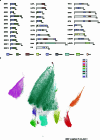
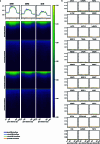
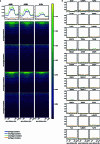
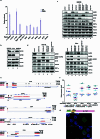

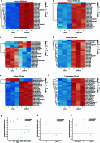
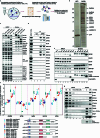

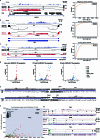
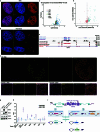
Similar articles
-
The role of transposable elements in the evolution of non-mammalian vertebrates and invertebrates.Genome Biol. 2010;11(6):R59. doi: 10.1186/gb-2010-11-6-r59. Epub 2010 Jun 2. Genome Biol. 2010. PMID: 20525173 Free PMC article.
-
Exonization of transposed elements: A challenge and opportunity for evolution.Biochimie. 2011 Nov;93(11):1928-34. doi: 10.1016/j.biochi.2011.07.014. Epub 2011 Jul 26. Biochimie. 2011. PMID: 21787833 Review.
-
Aberrant pre-mRNA maturation is caused by LINE insertions into introns of the white gene of Drosophila melanogaster.Nucleic Acids Res. 1995 Oct 25;23(20):4015-22. doi: 10.1093/nar/23.20.4015. Nucleic Acids Res. 1995. PMID: 7479058 Free PMC article.
-
Long-read direct RNA sequencing by 5'-Cap capturing reveals the impact of Piwi on the widespread exonization of transposable elements in locusts.RNA Biol. 2019 Jul;16(7):950-959. doi: 10.1080/15476286.2019.1602437. Epub 2019 Apr 14. RNA Biol. 2019. PMID: 30982421 Free PMC article.
-
RNA-protein interactions that regulate pre-mRNA splicing.Gene Expr. 2002;10(1-2):79-92. Gene Expr. 2002. PMID: 11868989 Free PMC article. Review.
Cited by
-
From computational models of the splicing code to regulatory mechanisms and therapeutic implications.Nat Rev Genet. 2025 Mar;26(3):171-190. doi: 10.1038/s41576-024-00774-2. Epub 2024 Oct 2. Nat Rev Genet. 2025. PMID: 39358547 Review.
-
Full-length RNA transcript sequencing traces brain isoform diversity in house mouse natural populations.Genome Res. 2024 Nov 20;34(11):2118-2132. doi: 10.1101/gr.279166.124. Genome Res. 2024. PMID: 39288994 Free PMC article.
-
Transposable Elements are Dysregulated in Brains of Individuals with Major Depressive Disorder.bioRxiv [Preprint]. 2025 Jan 24:2025.01.22.634143. doi: 10.1101/2025.01.22.634143. bioRxiv. 2025. PMID: 39896556 Free PMC article. Preprint.
-
Selective identification of epigenetic regulators at methylated genomic sites by SelectID.Nat Commun. 2025 Apr 18;16(1):3709. doi: 10.1038/s41467-025-59002-y. Nat Commun. 2025. PMID: 40251151 Free PMC article.
-
Domain acquisition enabled functional expansion of the TFIIS transcription factor family.Cell Biosci. 2025 Jun 4;15(1):78. doi: 10.1186/s13578-025-01423-9. Cell Biosci. 2025. PMID: 40468406 Free PMC article. Review.
References
MeSH terms
Substances
Grants and funding
LinkOut - more resources
Full Text Sources
Molecular Biology Databases

